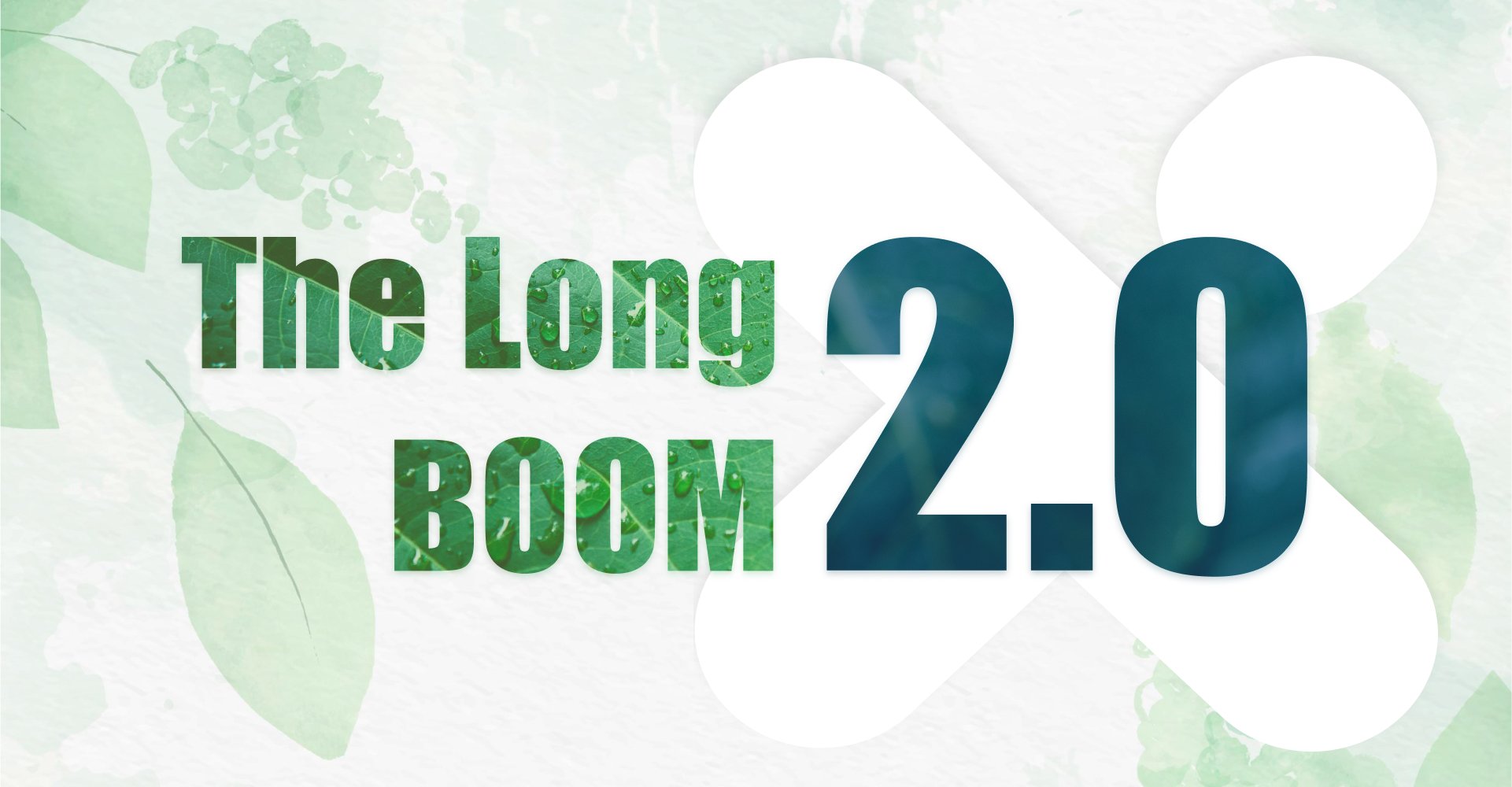The long boom 2.0: the next economic shift must be nature-centric
A “long boom” refers to a period of economic growth such as the post- World War II economic expansion, the 1990s United States boom, the mid 1980s-2000s period and the 1991–2020 Australian economic boom. These growth periods are characterised by socio-technical dynamism and a rapid pace of expansion and have, in the past, also resulted in significant increases in the degradation of nature, biodiversity loss and climate change.
In the pursuit of economic growth, we have overexploited our ecosystems and caused the destruction of natural services that we depend on[1]. That much is clear. However, just as painfully clear is the moral obligation to ensure and facilitate that ‘no-one is left behind’ and that all have access to decent housing, food, healthcare, and education — in short sustainable development. Yet our current trajectory is both unsustainable and inequitable; to illustrate this fact, the Global Footprint Network has measured that to maintain our current way of being, we would need 1.6 Earths.
The true cost of growth
The world has experienced profound economic growth in the last several decades. Today, the world economy is more than six times larger than it was half a century ago [2]. There are immense benefits to this growth such as higher incomes, better healthcare services, poverty reduction and an overall improved quality of life. However, these developments have been fuelled by the erosion of the world’s natural assets and the burning of fossil fuels. Natural resources have been treated as expendable and this has come at a massive ecological cost.
We are now experiencing the limitations of unsustainable economic growth. Climate change is decimating communities, increasing resource scarcity, and harming economies. The science is clear: there is a planetary emergency [3]. If we are to limit the global temperature increase to well below 2°C as per the Paris Agreement, we must reduce carbon emissions and deploy natural climate solutions at scale. We cannot continue business as usual.
Nature as an asset class
“Nature is the soundest investment for economic resilience and human well-being.” — World Economic Forum
Natural climate solutions can contribute about a third of our climate mitigation needs[4], and nature is the only cost-effective and readily available mechanism for carbon removal at scale[5]. We have an ecological and socio-economic imperative to invest in nature and nature-based solutions. However, our prevailing economic systems are not adequately geared for capital flows to nature. This is largely because the value of nature has traditionally not been reflected in market prices [6].
This is changing and business leaders, governments, and communities are starting to take action with increased acknowledgement that our economies are embedded in nature. There are also tremendous financial prospects related to green investments; new opportunities to the scale of $10 trillion annually.
Yet, despite increasing incentives, financing remains grossly inadequate. Climate adaptation costs alone are 5 to 10 times greater than international adaptation finance flows to developing countries[7]. This has consequences, because for impact at scale, we will need investments at scale!
Scaling forest projects!
Of the natural climate solutions available to us, forests have the greatest potential for carbon sequestration. They also provide an array of other benefits such as biodiversity, improved water and air, and enhanced rural livelihoods. However, globally we continue to lose forest area to deforestation when we should be heading in exactly the opposite direction! Here lies our first challenge of scale; we need to restore a forest area the size of France, Norway, Spain, and Italy if reforestation is to sequester enough carbon to become the climate solution that it is capable of becoming.
The second challenge of scale is that we need to get trillions of dollars out of polluting asset classes and into natural climate solutions. Increasingly, companies are making net zero pledges, and as investments transition from polluting asset classes, it raises the question of where the capital will go? Where is the next tranche of ventures? It is integral to understand that in confronting climate change, the platforms that we have come to rely on: NGOs, COP Agreements and corporate targets, whilst important, are simply not enough. The organisational infrastructure to scale natural climate solutions does not exist. We are going to need a constant pipeline of new ventures that are purpose driven and incessantly focused on positive climate outputs. For this, we need a paradigm shift!
Xilva is a venture by Brainforest (a for-impact venture studio for forests and the climate) and works to overcome the challenges and inefficiencies of deploying funds to forests, especially early-stage projects. This is achieved by combining technical expertise in forestry with innovations in technology. The result is a proprietary framework and methodology for screening and assessing forest & nature-based projects. We know that we can help scale the thousands of forest projects that are out there and using our unique due diligence as an enabler formula to deploying the right capital will be key to this growth.
Sustainable economic growth satisfies human needs today whilst protecting natural resources and the environment for future generations. Practical solutions that place nature at the fore of economic transactions can deliver on this.
[1] UNEP. 2021. Making Peace with Nature: A Scientific Blueprint to Tackle the Climate, Biodiversity and Pollution Emergencies. https://www.unep.org/resources/making-peace-nature
[2] Kose, M and Oztruk, E. 2014. A World of Change. IMF. https://www.imf.org/external/pubs/ft/fandd/2014/09/kose.htm#:~:text=The%20world%20economy%20is%20six,industries%20and%20promoted%20economic%20growth
[3] World Economic Forum. 2022. Scaling investments in nature: The next critical frontier for private sector leadership. https://www3.weforum.org/docs/WEF_Scaling_Investments_in_Nature_2022.pdf
[4] Noah Conference. 2021. Mobilizing Capital for Forests — The Brainforest Ecosystem. https://www.youtube.com/watch?v=8wwjmgaMdok
[5] World Economic Forum. 2022. Scaling investments in nature: The next critical frontier for private sector leadership. https://www3.weforum.org/docs/WEF_Scaling_Investments_in_Nature_2022.pdf
[6] Dasgupta, P. 2021. Economics nature’s way. IMF. https://www.imf.org/en/Publications/fandd/issues/2021/09/economics-and-nature-dasgupta
[7] United Nations 2022. More funding needed for climate adaptation, as risks mount. https://news.un.org/en/story/2022/11/1130142



